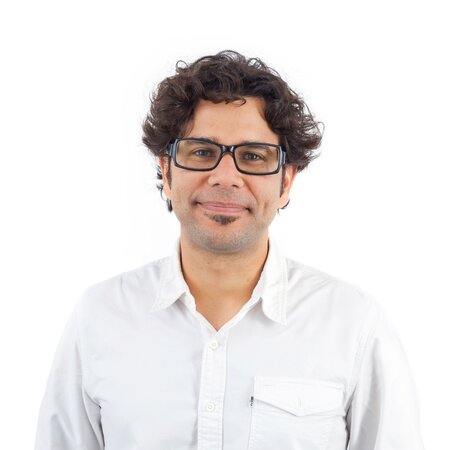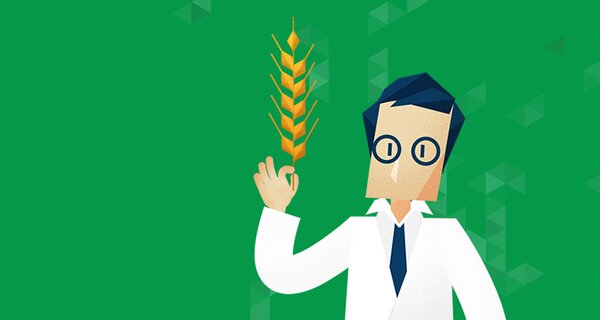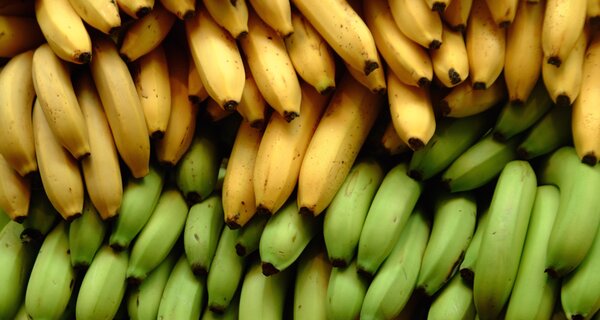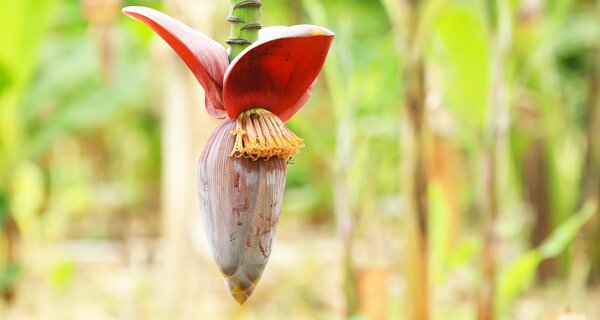Wild About Bananas
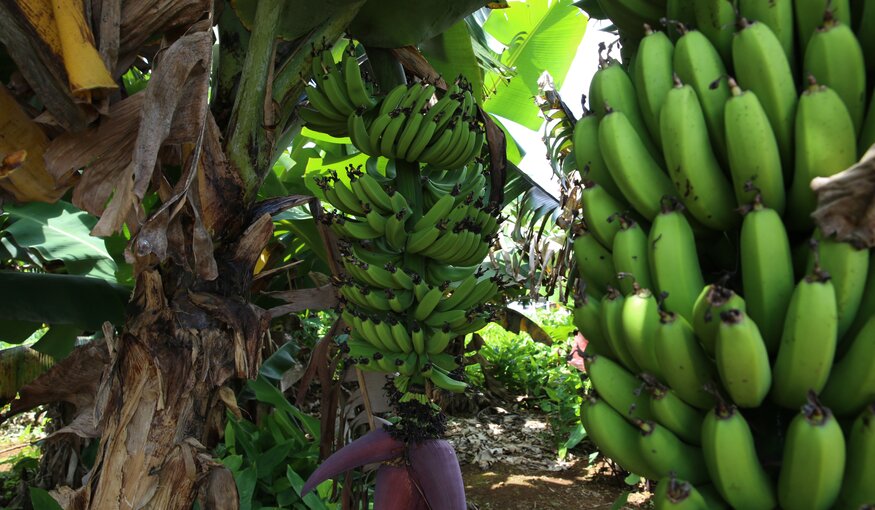 For the Food Forever Initiative, the Crop Trust travelled to Mauritius to meet with President Ameenah Gruib-Fakim, who is also the Chair of the initiative, and to have a look at the nation’s crops.
For the Food Forever Initiative, the Crop Trust travelled to Mauritius to meet with President Ameenah Gruib-Fakim, who is also the Chair of the initiative, and to have a look at the nation’s crops. 12 November 2019
Hunting for Drought Tolerance in Papua New Guinea
Bananas were first domesticated in Southeast Asia, sometime between 5,000 and 8,000 BCE. They have since spread widely around the world. India alone consumes a quarter of the world’s annual production. In Uganda and Rwanda, per capita consumption exceeds 200 kg per year. There are huge commercial plantations in Central and South America. All across the tropics, bananas are a staple for both rural and urban populations; it’s a generous crop that – even left to its own devices – will bear abundant fruit.
Walk into a supermarket anywhere, at any time of the year, and you will find that perfect, yellow Cavendish banana, which accounts for almost 50% of the 100 billion bananas that are consumed annually in the world. But walk through any village market in Papua New Guinea, Cameroon or El Salvador, and you’ll find half-a-dozen or more varieties of bananas: tiny bananas; stubby bananas; purple ones; orange ones. And their tastes are as diverse as their shapes and colors.
More than a thousand varieties may be grown around the world. And back in Southeast Asia the crop’s wild relatives still hang on in their rapidly shrinking habitats. The diversity these represent may hold the answer to the problems facing banana farmers around the world.
Like other major crops, bananas are indeed facing severe challenges, including variants of the deadly Panama disease, which almost wiped out the commercial Gros Michel banana in the 1950s and continues to threaten Cavendish plantations in some countries.
Drought is also a big challenge and is becoming more of a concern due to our changing climate. In fact, most edible bananas are susceptible to drought and can suffer yield losses up to 65%. Subsistence farmers are hit the hardest. These women and men grow bananas for personal consumption or to supplement their income in their small plots or at the edge of trails. For them, bananas are food security, not a tasty dessert. This is certainly true in countries such as Papua New Guinea (PNG), where earlier this year Sebastien Carpentier, leader of the Crop Wild Relatives (CWR) Project’s banana pre-breeding effort, spent time collecting wild bananas and exploring how they perform in diverse micro-environments.
Sebastien is a bioscience engineer, (i.e. an agricultural engineer that is also skilled in molecular biology and genetics). He joined Bioversity International in October 2017 and is based at the Katholieke Universiteit Leuven, Belgium, where the International Musa Germplasm Transit Centre (ITC) holds the world’s largest collection of banana diversity. His work with banana wild relatives will ultimately pinpoint the most appropriate species (and specific individual plants) for breeders to tap into to improve the crop’s drought tolerance.
A few days after his return from PNG, I caught up with Sebastien. Still a little jet-lagged yet energized by the experience, he was happy to discuss the trip and how that experience fits within the overall CWR Project’s banana pre-breeding effort.
Luis Salazar: I recently read that archaeological and paleoenvironmental evidence suggest bananas were originally domesticated in Papua New Guinea. So, you traveled to the banana’s center of diversity. That must have been exciting. Tell me a little about your experience there.
Sebastien Carpentier: Well first, let me say that our friends and collaborators from NARI (National Agricultural Institute of Papua New Guinea) had meticulously prepared a full agenda for us.
We were on the main island, New Guinea, for 12 days. You can go from sea level up to 4,500 meters above sea level in no time. That made it ideal for us to study banana diversity growing in different environments with distinct altitudes, temperatures and precipitation.
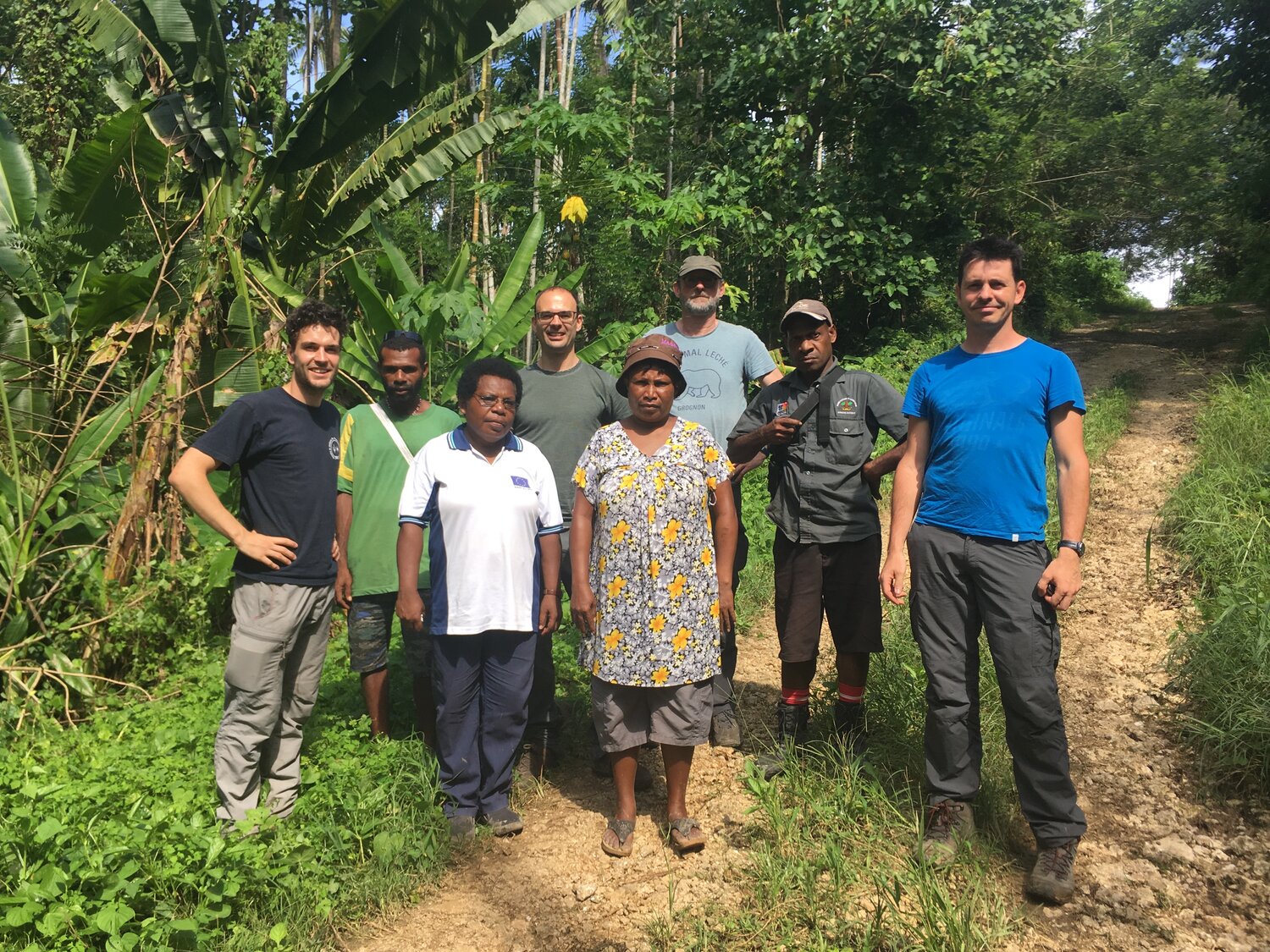
Left to right: David Eyland (KUL), Local guide, Janet Poafa (NARI), Sebastien Carpentier (KUL/Bioversity International), Local guide, Bart Panis (KUL/Bioversity International), Local Guide, and Steven Janssens (Meise Botanic Garden).
There were six of us on the expedition: Janet Paofa, who leads the banana research program at NARI; Steven Janssens, an ecologist and population geneticist from the Meise Botanical Garden, Belgium; Bart Panis, a conservation and seed specialist from Bioversity International; David Eyland, a PhD student funded by the CWR Project who is investigating wild banana species for drought tolerance traits, and me.
We visited Lae in the North, Madang in the Northeast, and Vanimo in the Northwest. And within each region, we looked at very different environments – from lowland to highland rainforests.
LS: Why the interest in all these different environments?
SC: Pre-breeding is all about traits. You cannot just randomly pick one wild banana and use it as a parent in your breeding effort. That same wild species can be found in – and has adapted uniquely to – different environments. Over time, plants evolve to thrive in particular conditions. Let me give you an example. During our expedition, we found wild Musa banksii in the three districts we visited. Vanimo has a non-existing or very short dry season, while Lae and Madang have a pronounced dry season. The same species was growing in very different environments. This means that these plants could have genetic differences. One might be better adapted to survive a drought period than the other.
See, we want to identify – to really pinpoint – the individuals that have adapted to these harsher conditions. Those have the traits we are after for our breeding efforts, to improve drought tolerance of the bananas we eat on a daily basis.
LS: Can you share some highlights from the expedition?
SC: Sure. In Lae, we explored grasslands that 24 years ago had been forests. Back in 1995, a year marked by a heavy drought in that region, the whole area burned down. Slowly, though, nature has begun its healing process and now the area is covered by grasslands. You wouldn’t expect wild bananas to grow there. But, against all odds, we found Musa balbisiana. In fact, multiple populations. Banana plants need a lot of light, but not direct sunlight the whole day. So, I can hypothesize that the Musa balbisiana we found can tolerate direct sunlight, and, thus, they can endure harsher, drier conditions.
Also in Lae, we climbed up to 1,400 meters above sea level, where a constant mist keeps humidity levels high and temperatures low. This mist also ensures there is no direct sunlight burning down on the vegetation. It was there that we found a very rare wild banana species: Musa ingens, which can grow as tall as 15 meters. Some say it is the tallest banana plant in the world. The ITC did not have this species in its collection. In fact, there are only a few institutes that hold samples of Musa ingens. And we were lucky enough to find it. Real lucky! Janet had never seen it. And if the local banana specialist has never seen it, this species is in danger of extinction – most probably due to forest clearing and agricultural expansion.
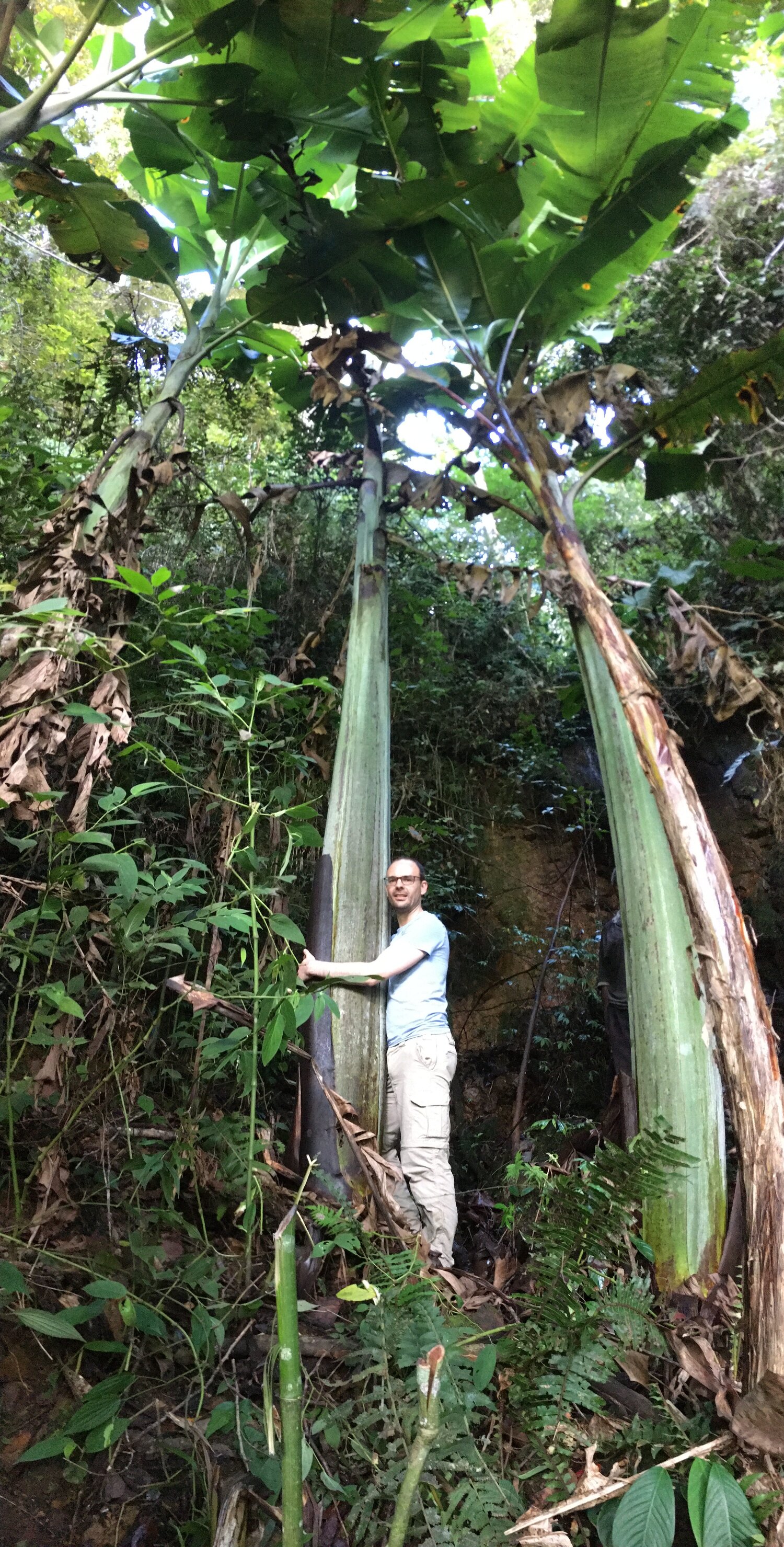
In the Lae region of PNG, at 1,400 meters above sea level, Sebastien Carpentier poses for the camera hugging a Musa ingens, a very rare species, known as “the tallest banana in the world.” (Photo: David Eyland).
LS: Finding this Musa ingens must have been pretty exciting. It is also proof that this project is contributing to the conservation of precious diversity. But I must ask, if this is a pre-breeding project, why collect?
SC: Sometimes you can separate these activities – say, you do the collecting; I do the pre-breeding, which means identifying and transferring the beneficial traits from wild relatives to elite materials. Other times, it’s just not that simple. For us as pre-breeders, collecting proved to be a necessity that arose after we had trouble regenerating some of the wild seeds we received last year via Kew’s Millennium Seed Bank (MSB). Working with banana seeds is not easy. Still, from Kew’s shipment, we successfully rescued 130 unique samples belonging to 12 distinct species or subspecies.
We really needed these seeds to carry out our pre-breeding activities. However, some species were still poorly represented among the material we had at our disposal. But, fortunately, through the CWR Project, we got the opportunity to re-collect in PNG.
And though it’s true that previous efforts had successfully collected certain species, we wanted to go a step further and collect as much as we could of the diversity within each species. And as pre-breeders, we know the kind of diversity we need. We can recognize it when we see it in the field.
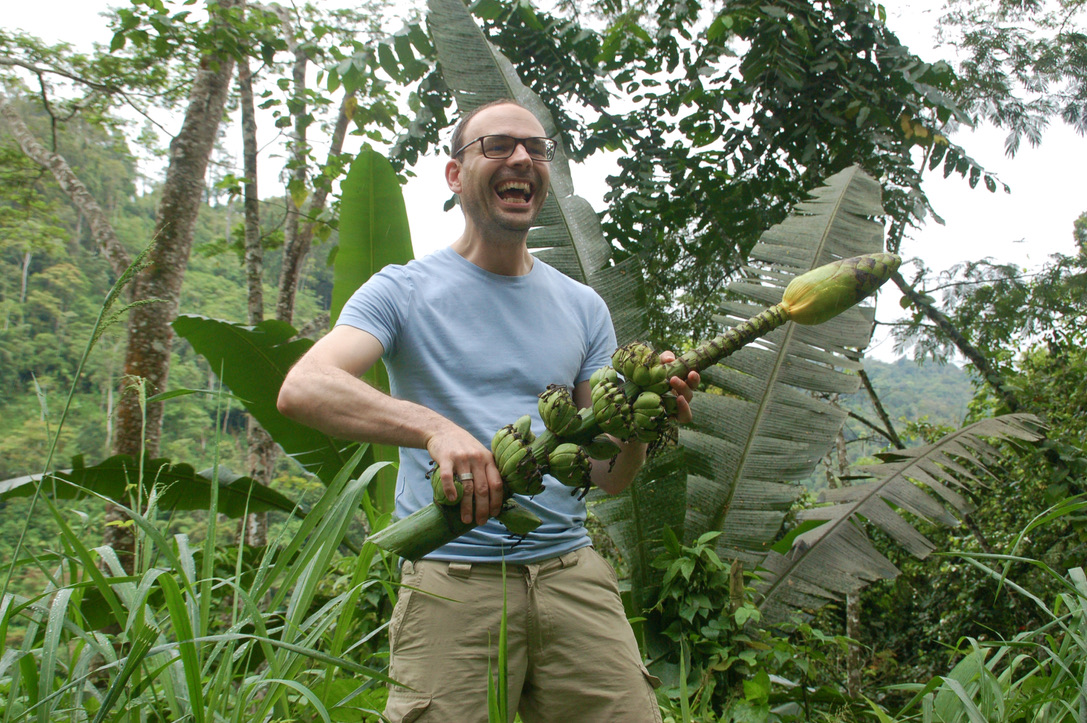
Success! Sebastien Carpentier, leader of the banana pre-breeding project, holding a recently collected wild Musa maclayi in Lae, Papua New Guinea.
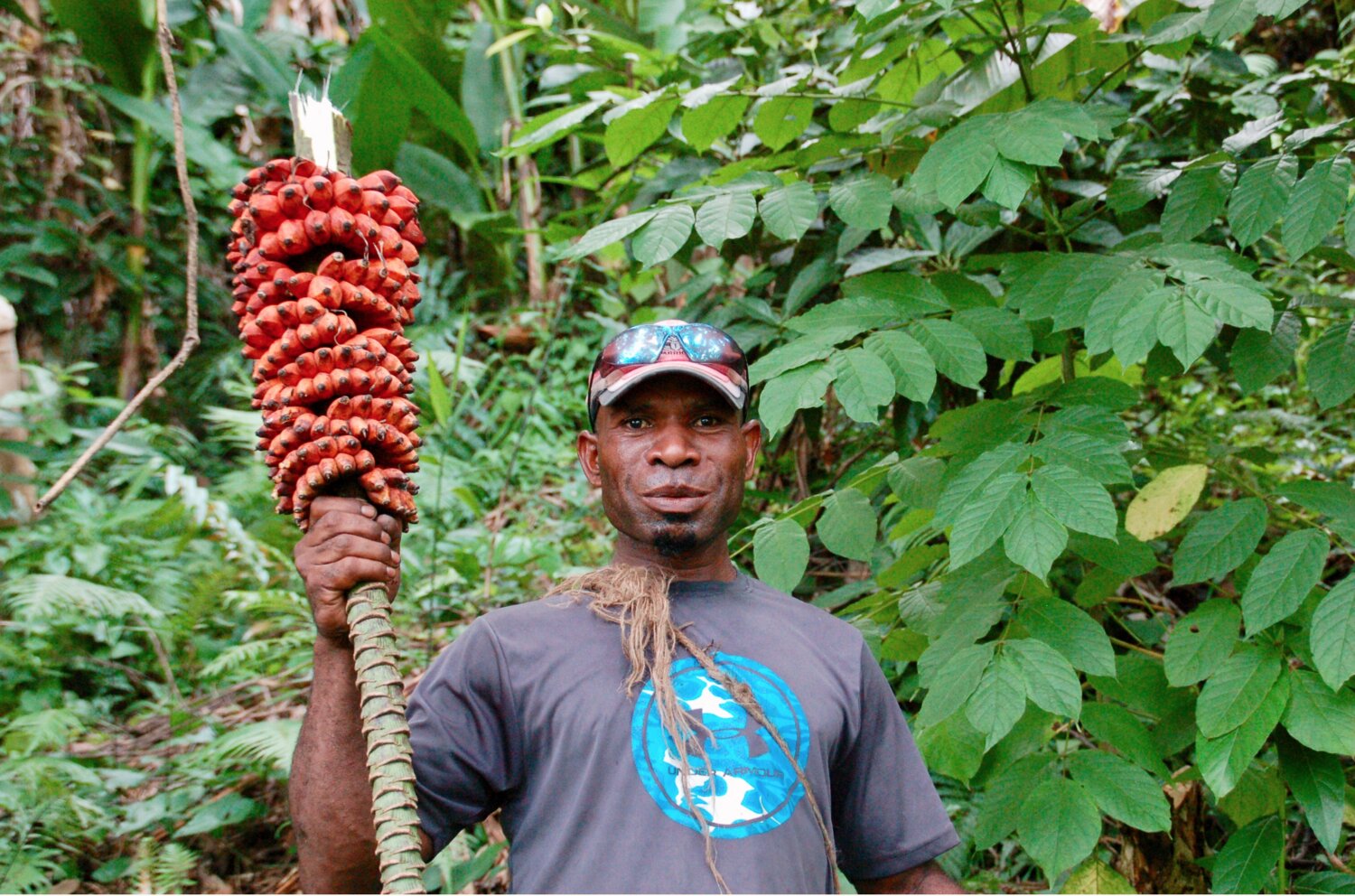
In Lae, a local farmer helped the seed collectors find Musa maclayi. In this photo, he displays the first collected bunch of bananas. (Photo: Sebastien Carpentier).
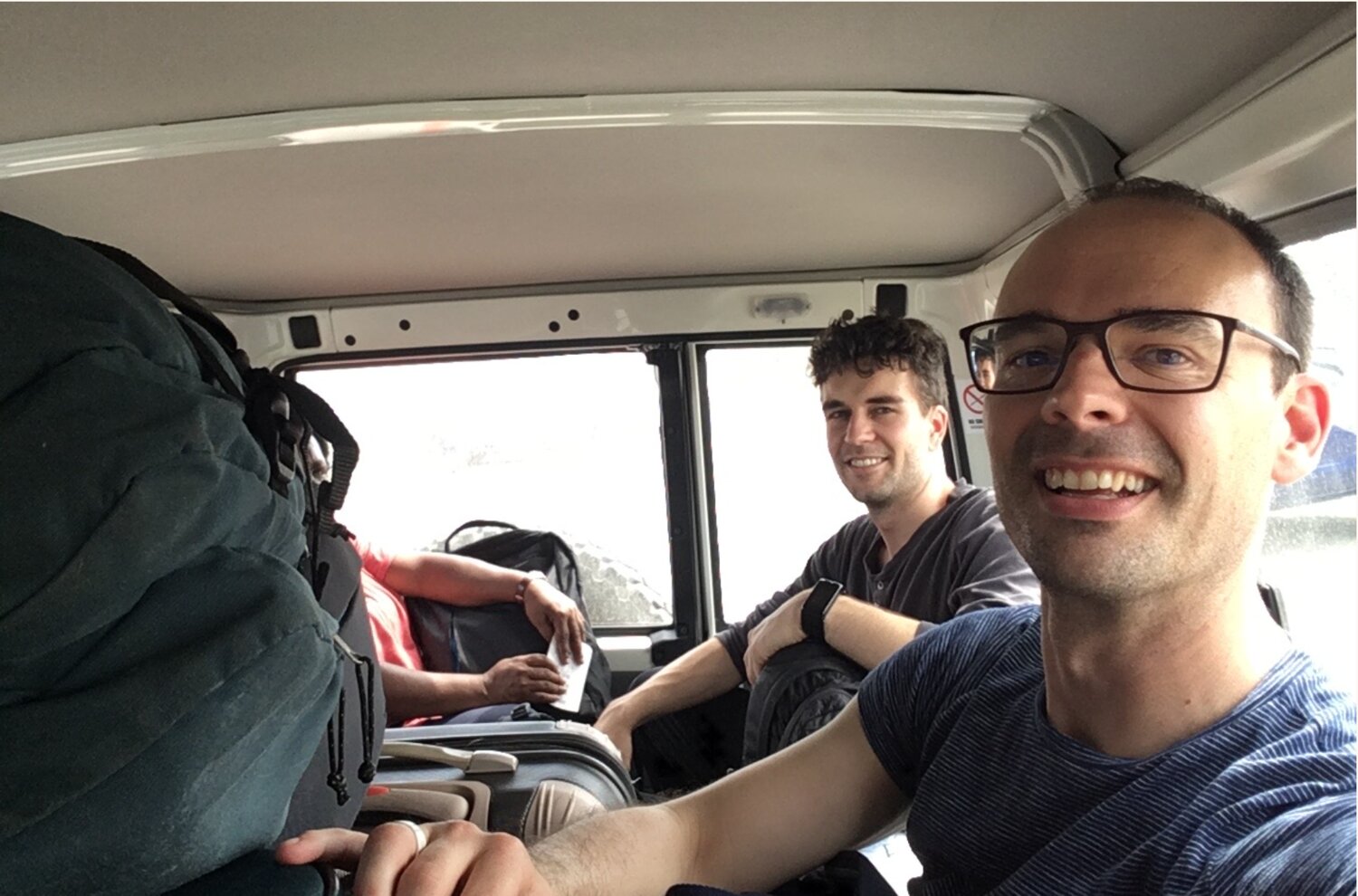
Selfie: Jetlagged in the jeep, the search for the banana wild relatives begins. “We were hunting for seeds to be used in a workshop we gave to our NARI colleagues on ways in which they can expand their own collection, and safely preserve and describe it for potential future use,” said Sebastien Carpentier.
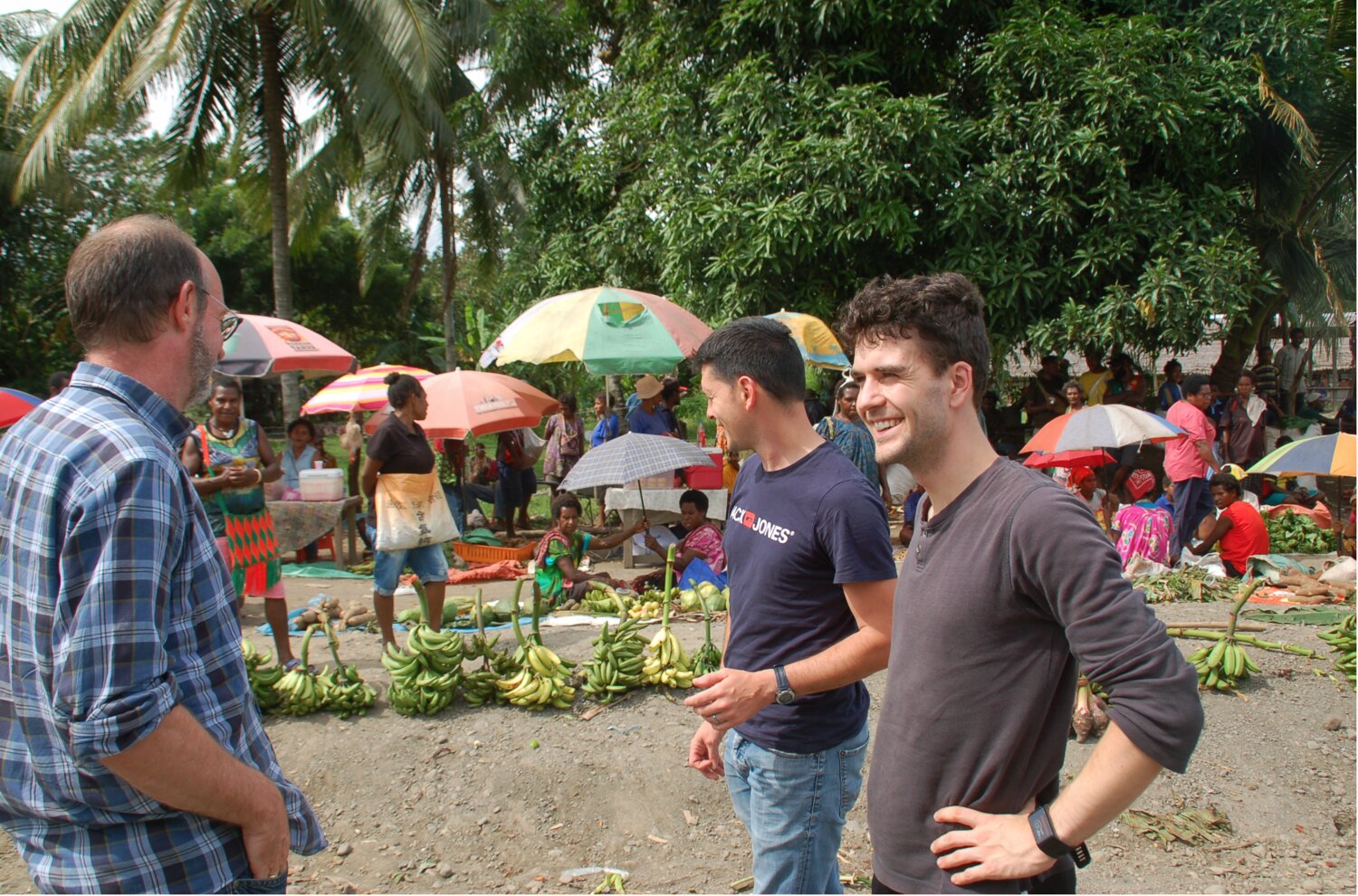
From left to right, Bart Panis (conservation and seed specialist from Bioversity International), Steven Jannsens (ecologist and population geneticist from the Meise Botanical Garden) and David Eyland (a PhD student funded by the CWR Project), visiting the local market in Lae. (Photo: Sebastien Carpentier).
LS: Collecting and conserving banana seeds is not easy. Neither is pre-breeding. At every stage of the process one finds hurdles. The odds are against you. Can we consider this to be a successful collecting effort?
SC: The key is to prepare well, and persevere, and we did both. It was a very productive trip. In total, we found eight wild banana species. In Lae, we collected five species: M. banksia, M. schizocarpa, M. ingens, M. maclayi and M. balbisiana and some natural hybrids between M. banksii and M. schizocarpa. In Madang, we found one additional species: M. peekelii. In Vanimo, two others: M. lolodensis and M. boman. Some species like M. banksii and M. schizocarpa we found across the regions.
| Total amount of sampled individuals per species | |
| M. banksii | 167 |
| M. schizocarpa | 96 |
| M. ingens | 46 |
| M. maclayi | 1 |
| M. balbisiana | 3 |
| M. peekelii | 49 |
| M. lolodensis | 3 |
| M. boman | 51 |
| Hybrids between M. banksii and M. schizocarpa | 2 |
| Total | 418 |
Next, the most promising individuals of each species will be selected and become parents in our breeding project.
LS: And the overall goal of this pre-breeding project is to screen wild bananas for drought tolerance, to unveil their potential for breeding, right?
SC: Yes, more concretely, we want to compare these newly collected wild bananas with the wild bananas from the ITC genebank that we studied earlier. Already now I can predict that, for example, those we found growing in the grasslands of PNG, without any shade, might be more drought-tolerant than the tall Musa ingens. We of course want to scientifically investigate their genetic differences. This will then allow us to generate new, increasingly drought-tolerant varieties. All this will keep us busy for years to come, with research that will go beyond the lifetime and scope of this project.
LS: So, what’s next?
SC: Well, first, the newly collected seeds will be woken up from their dormancy and the seedlings will be characterized under controlled conditions in a greenhouse (see image below). We are using a technology called automated non-invasive phenotyping, which means smart sensors automatically measure a whole list of traits on each plant, which gets photographed countless times every day as it grows. Step by step, the plants will be challenged with drier and hotter air, and by providing them with less and less water. How they react to these stresses will help us select the most promising parents for our breeding programs.
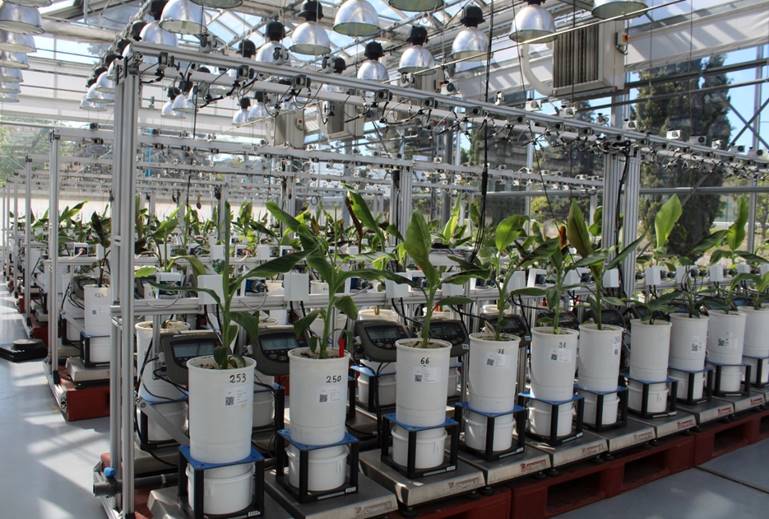
High-throughput phenotyping experiments for wild bananas in the greenhouse at INRA in Montpellier, France.
LS: How much of a threat is drought – for the industry, for the small-scale farmer?
SC: For the industry, drought is really not an issue, but it is a direct threat for small-scale farmers in most banana producing areas. For these farmers, drought is one of the top three threats to yield[1]. That said, banana plants can be put in the ground and, even without too much management, sooner or later they will give you some yield. Many PNG farmers plant bananas along paths in forests and come back 12 months later to harvest. It’s food on the table. But farmers could increase yields and harvest the fruit so much earlier, if they could invest more resources and apply more advanced management practices. But inputs – more resources, advanced management practices – are often not an option. What a small-scale farmer can do is plant the right variety in the right environment, especially in PNG where many farmers face a pronounced drought season.
LS: Looking ahead, what do you foresee will be the biggest challenges you and the banana pre-breeding collaborators will face to tackle drought?
SC: Drought is a complex trait. And even though drought tolerance is supposed to be a priority in banana breeding, research on this topic remains minimal. To breed a well-adapted and, hopefully, drought-tolerant super banana, we will need decades. You can’t do it with a single pair of parents. Today, it takes 12–14 years to successfully complete a breeding cycle. And trust me, the list of new materials being released and used in the banana world is very short.
Thanks to this banana pre-breeding project coordinated by the Crop Trust, the results – the pre-breeding lines generated, all the associated data – will make all banana breeders’ lives easier. Our findings will help them select and use the ideal parents for their specific breeding efforts, as they work towards finding “climate-proof” solutions for those farmers growing bananas in increasingly challenging environments.
This article was originally published on the Crop Wild Relatives (CWR) Project website.
The CWR Project, which ran from 2011 to the end of 2021, was managed by the Crop Trust with the Royal Botanic Gardens, Kew, and implemented in partnership with national and international genebanks and plant breeding programs around the world. This global team of experts collected important species of crop wild relatives, ensured their long-term conservation, and facilitated their use in breeding new, improved crops. The CWR Project was generously supported by the Government of Norway. Launched in 2021, Biodiversity for Opportunities, Livelihoods and Development (BOLD) builds on the work and achievements of the decade-long CWR Project.
Categories: Crop Wild Relatives, Banana

